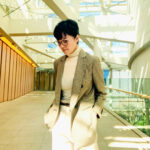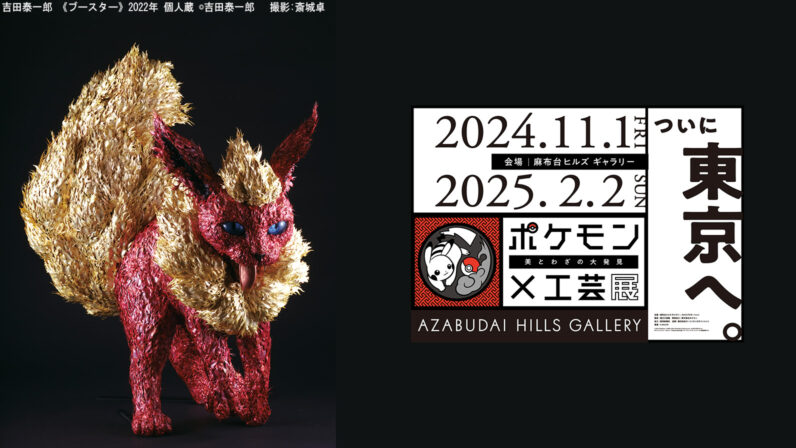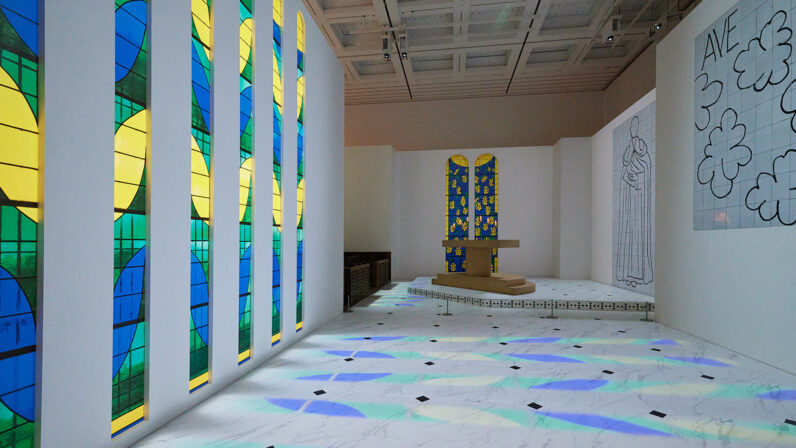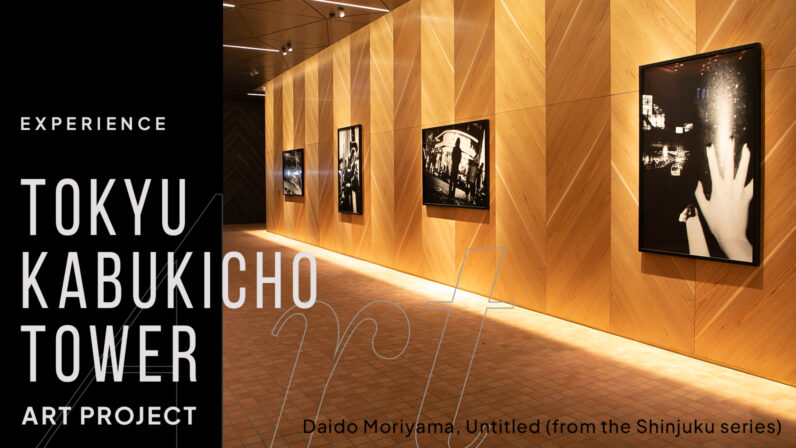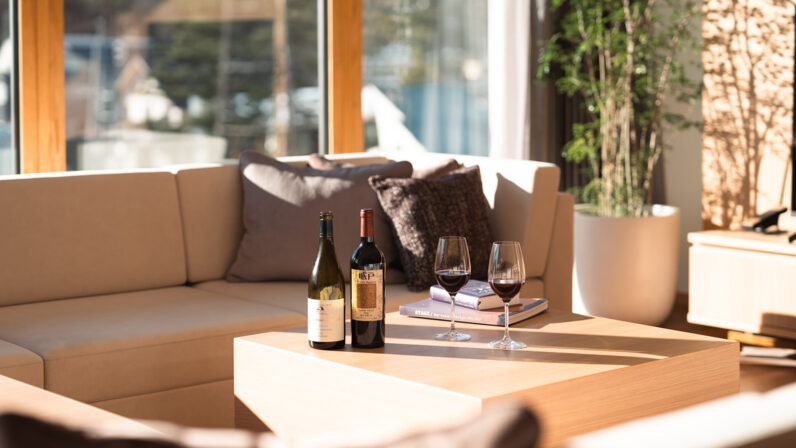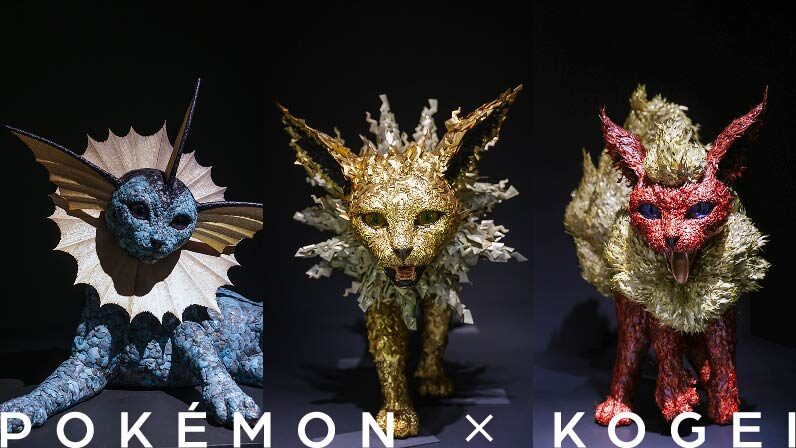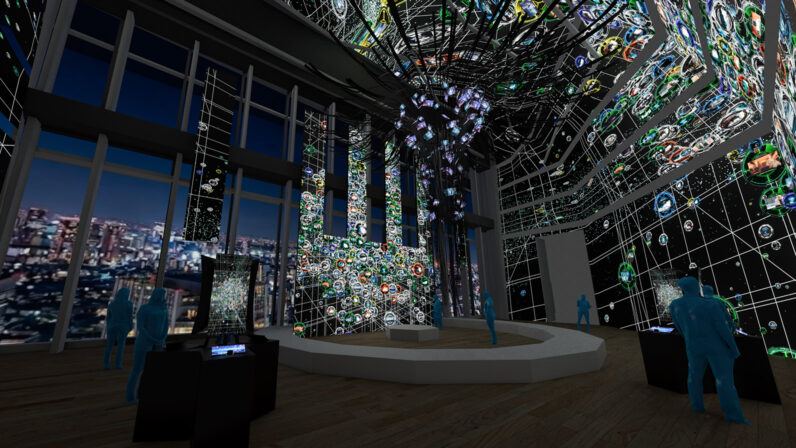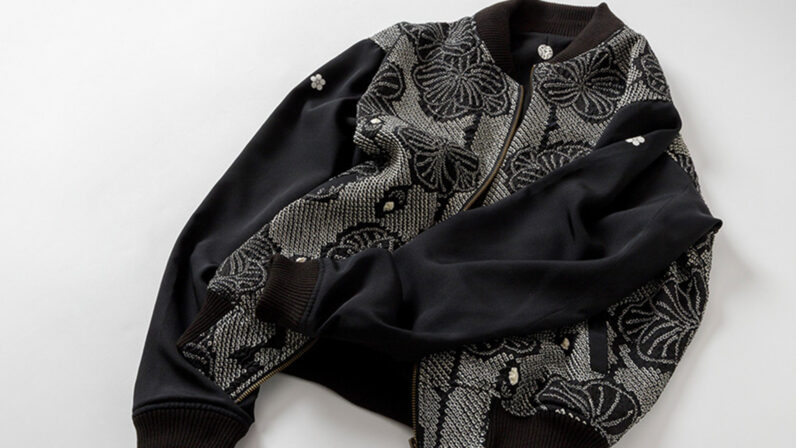Mademoiselle Yulia is a multifaceted talent. She is active in the fashion scene as a DJ while also producing her own kimonos. In this series, Yulia, who is well-versed in art and architecture, visits her favorite spots and discusses how she coordinates kimonos that harmonize with the surroundings. For this ninth edition, she heads to the recently fully reopened Yokohama Museum of Art, which has been drawing attention since its grand return in February 2025. Inspired by the port city’s modernist architecture and maritime history, Yulia brings us a look that blends tradition with the spirit of the space.
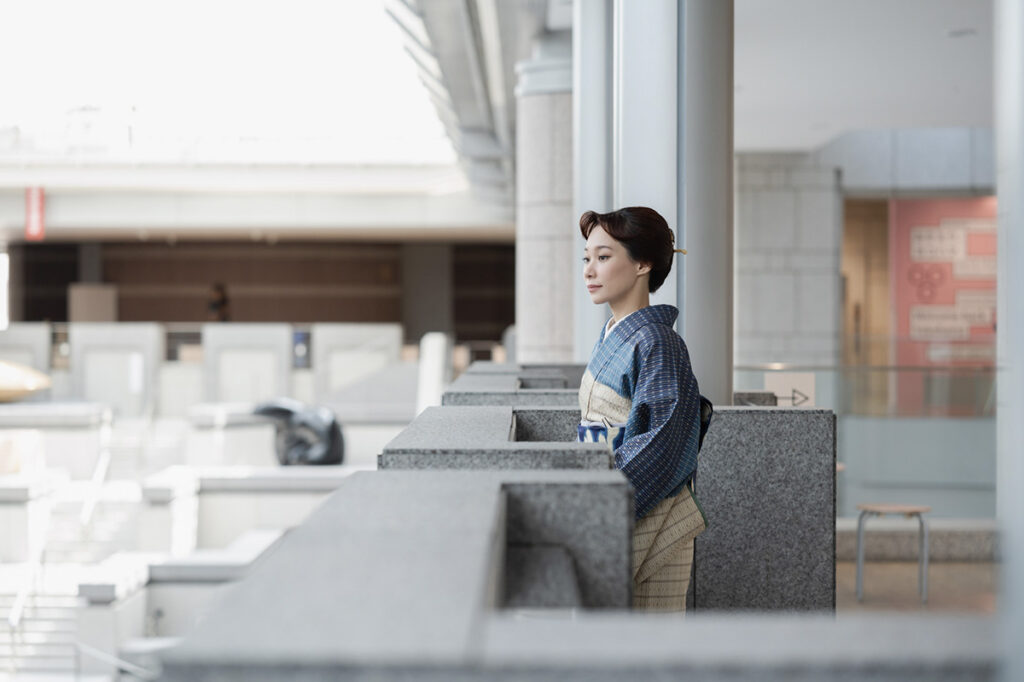
Yulia gazes out over the Grand Gallery from the third-floor corridor, where the exhibition rooms are located.
A Museum in Dialogue with the City of Yokohama
Yokohama, long known as Japan’s gateway to the world and a hub of international trade, became home to a major center for contemporary art in 1989 with the opening of the Yokohama Museum of Art. It also marked a milestone as the first art museum designed by Kenzo Tange, the legendary architect celebrated for his modernist vision.
After closing in March 2021 for extensive renovations, the museum finally reopened its doors fully on February 8, 2025. Having once DJed in the museum’s Grand Gallery, Yulia had been looking forward to this moment and welcomed its return with the joy and energy of early spring.
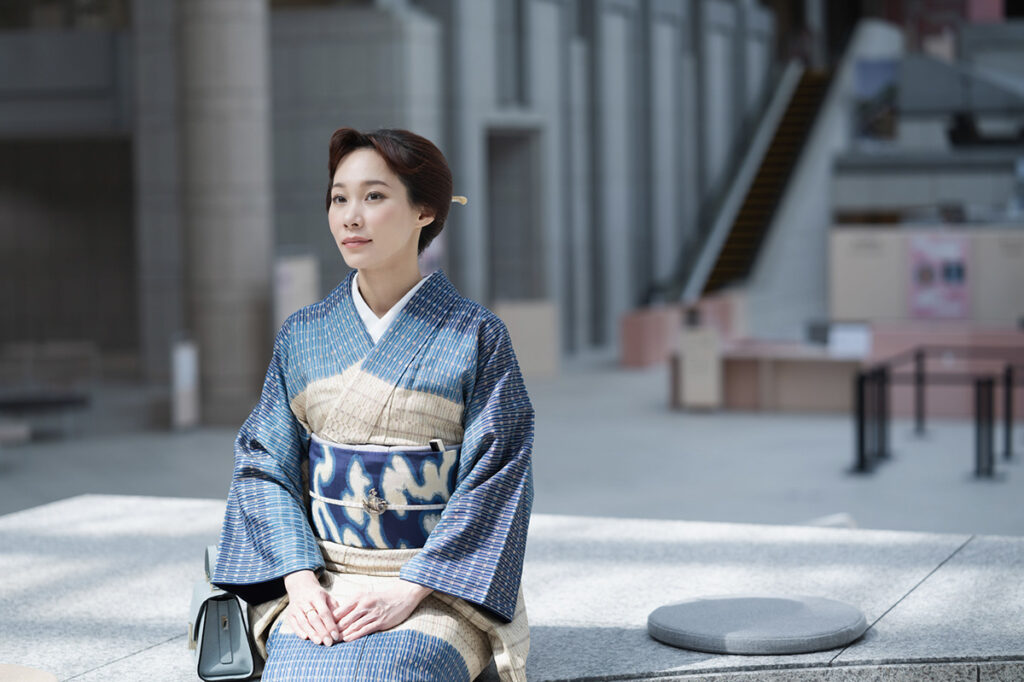
Basking in the warm, natural light of the Grand Gallery.
A major highlight of the renovation is the ‘Grand Gallery’ entrance hall, where architect Kenzo Tange put much of his focus, driven by his vision of creating a space that anyone could easily access and use. After repairing and reopening the roof louvers, which had been closed for years, the space was transformed into a bright, open area filled with natural light.
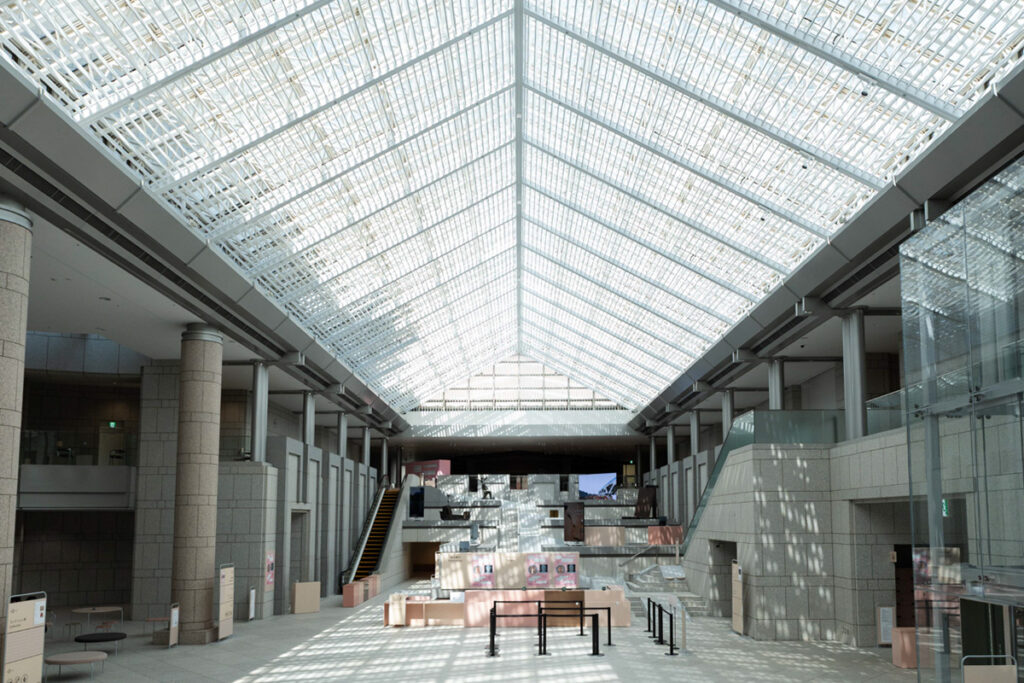
The Grand Gallery, with its vast, open space, welcomes visitors with an impressive sense of scale. Sunlight streams through the glass louvers, filling the area, while the top of the ceiling rises to an impressive height of about 16 meters.
In tribute to Tange’s vision, architect Kumiko Inui and her firm, Inui Kumiko Architects, brought new energy to the space with the design of the ‘Free Area.’ On the elevated stage, a library was added, allowing visitors to freely explore books related to the exhibitions or discover more about Yokohama’s history and culture. The varying sizes of tables, inspired by the subtle pinks and beiges in the solid granite, create a harmonious rhythm throughout the space.

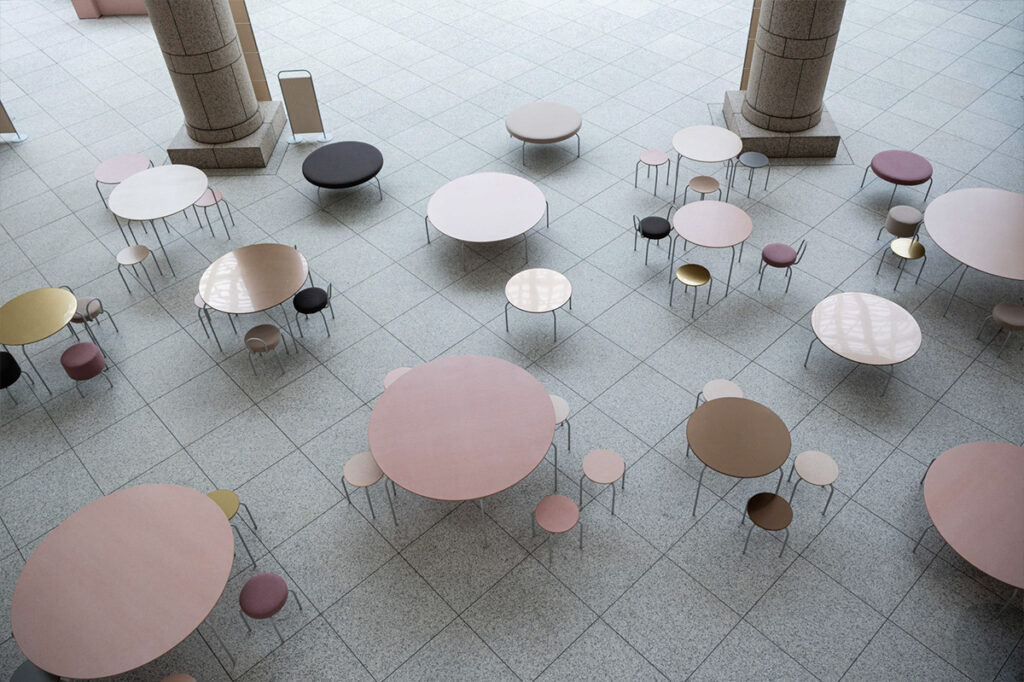
1st image: The library space set up in the Grand Gallery.
2nd image: The ‘Free Area,’ where soft pink tones, inspired by the color of the granite, serve as the centerpiece.
To celebrate the grand reopening, the ‘Welcome Back, Yokohama’ exhibition is being held. Connecting Yokohama’s history from ancient times to the present through the theme of “the port,” the exhibition is divided into eight chapters. In collaboration with the Yokohama City History Museum, it begins with displays of Jomon pottery and Edo-period ukiyo-e prints, followed by decorative objects from the Meiji era and Western-style hanging scrolls. The exhibition also highlights wartime and post-war port city scenes, along with glimpses of behind-the-scenes cultural moments captured in paintings and photographs.
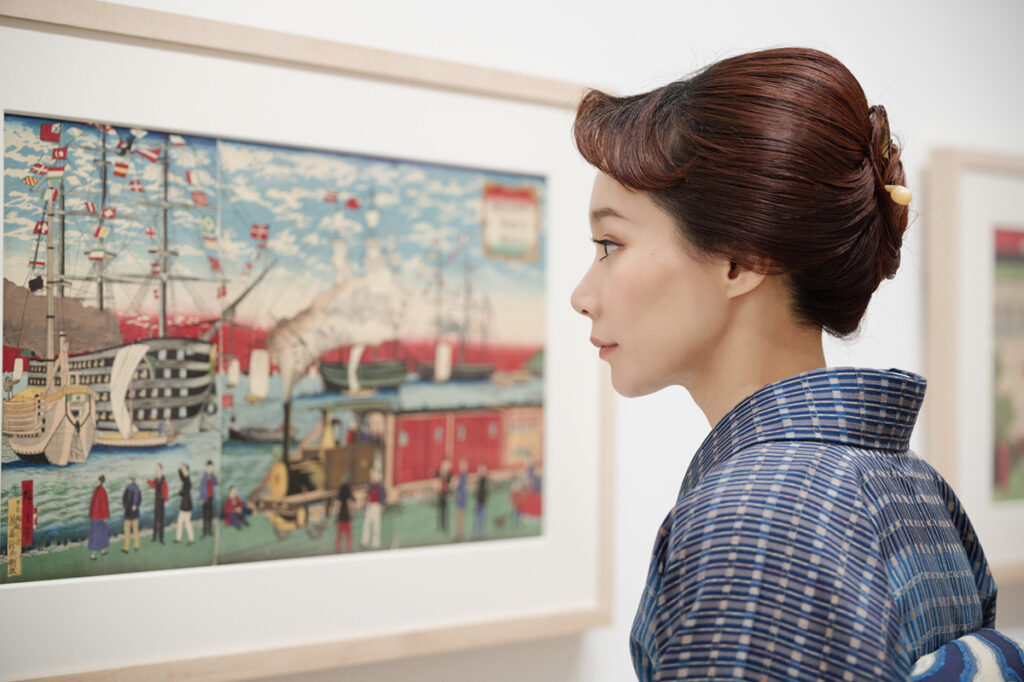
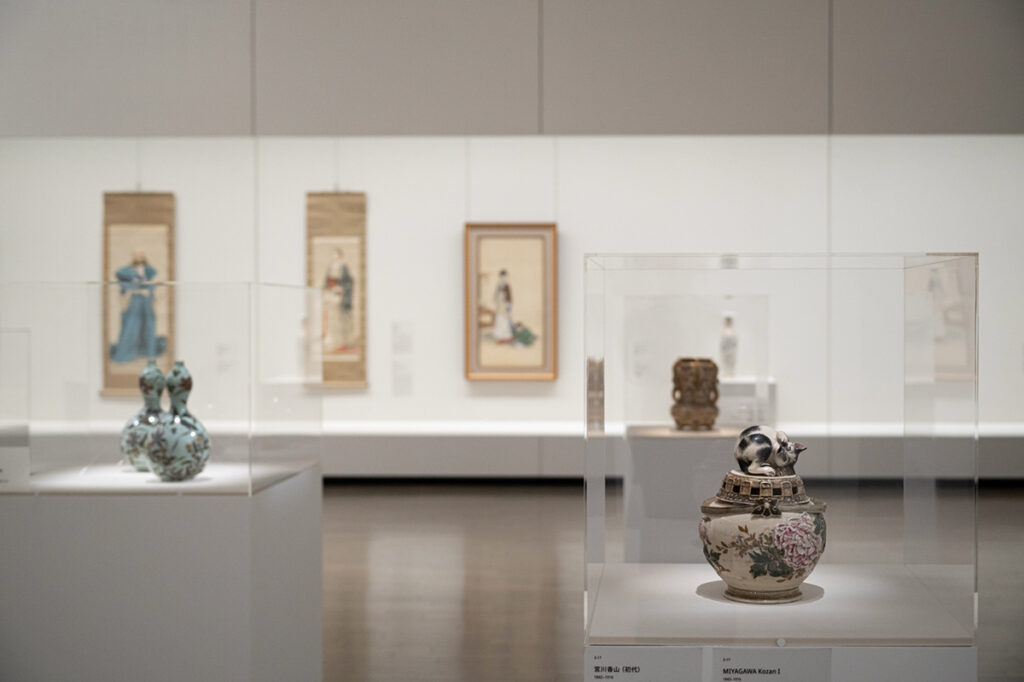

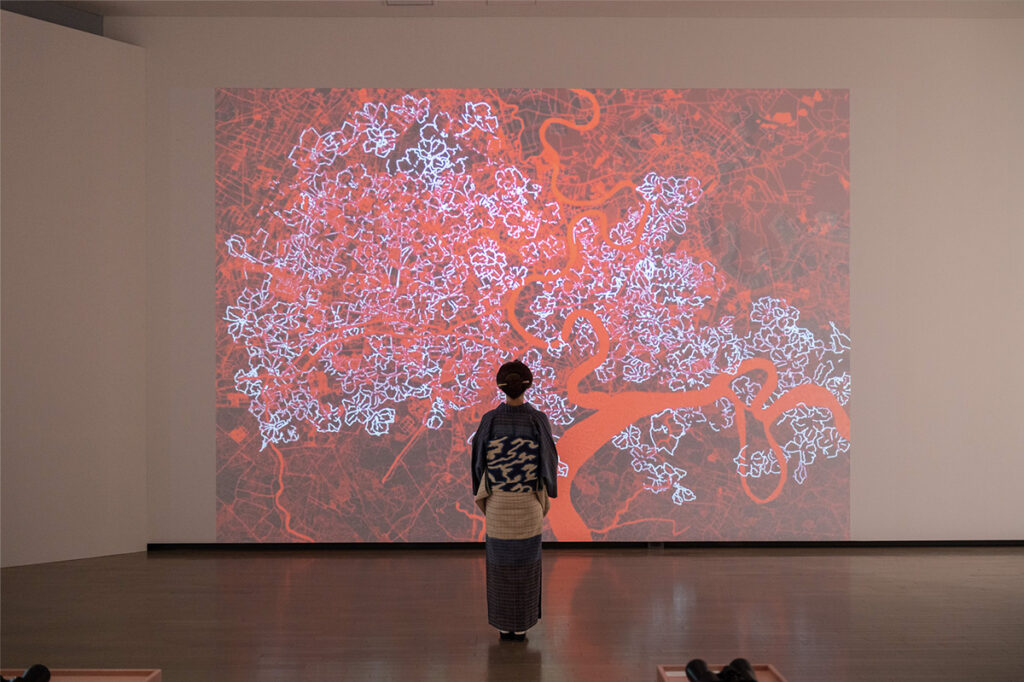
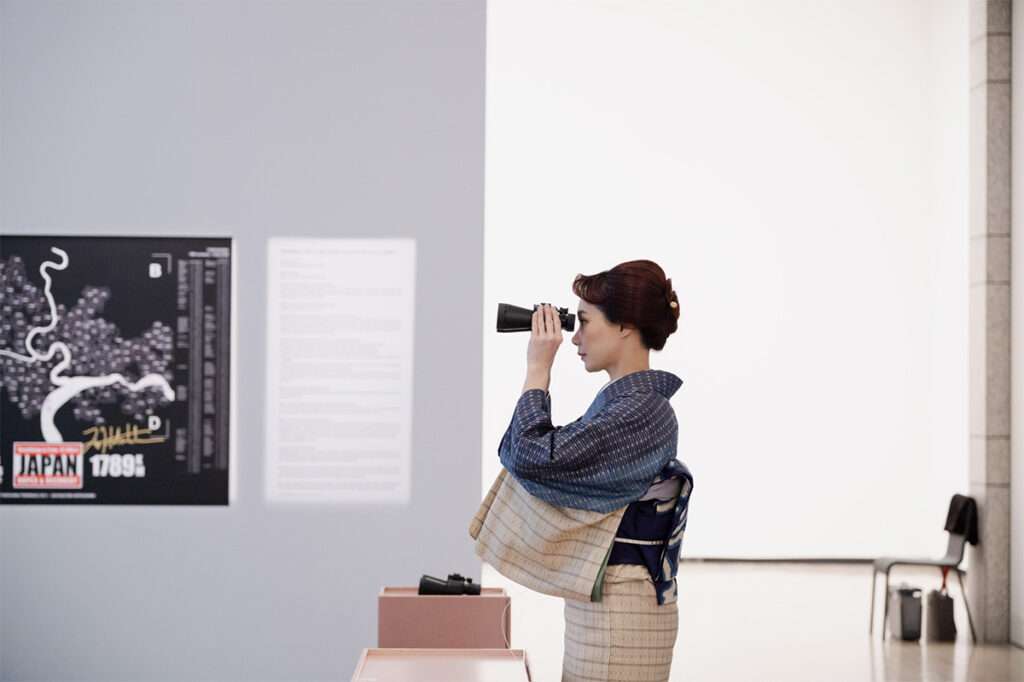
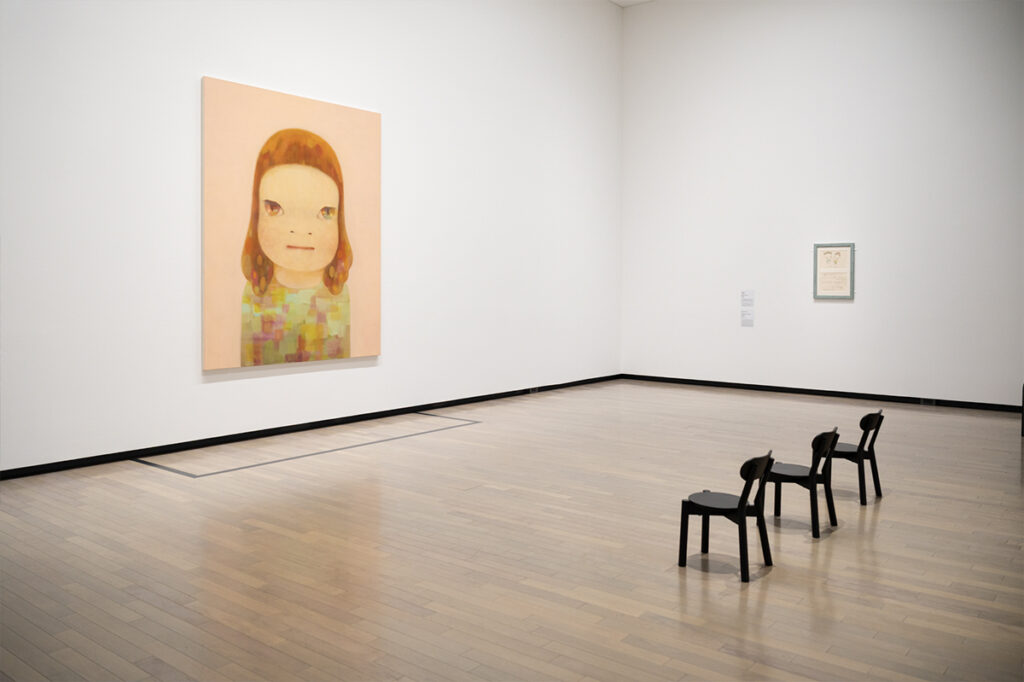
Exhibition view: ‘Welcome Back, Yokohama’ February 8, 2025 (Sat) to June 2, 2025 (Mon).
Yulia was so captivated by the ‘Welcome Back, Yokohama’ exhibition, which is divided into eight chapters, that she forgot all about the camera.
Chapter 7 features architectural models of the Yokohama Museum of Art, which opened during the YOKOHAMA EXOTIC SHOWCASE ’89 (YES’ 89), along with key pieces from the museum’s collection. Chapter 8 showcases works by Yoshitomo Nara, focusing on digital art and the future of art, along with his messages. The exhibition is filled with diverse and fascinating highlights.

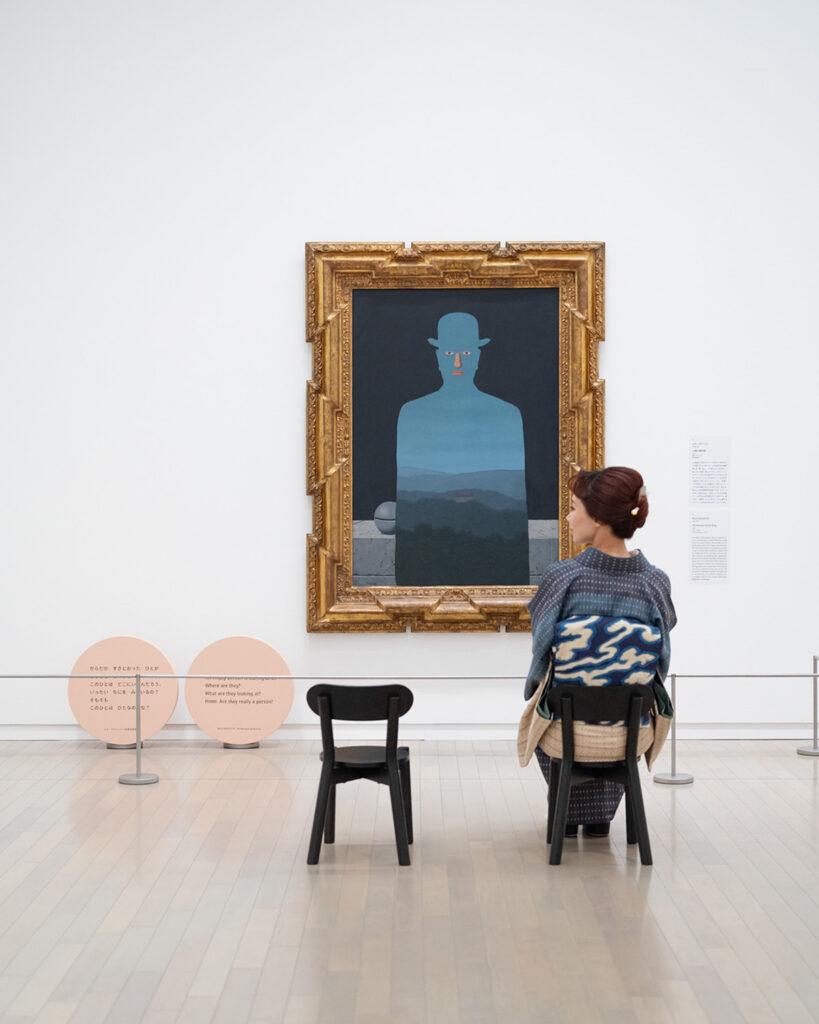
1st image: Yulia, fascinated by the artist’s architectural models.
2nd image: Thoughtful details, like placing the explanations at a lower height for children to enjoy, have been incorporated. The image shows René Magritte’s ‘The Museum of the King’ (1966), part of the Yokohama Museum of Art’s collection.
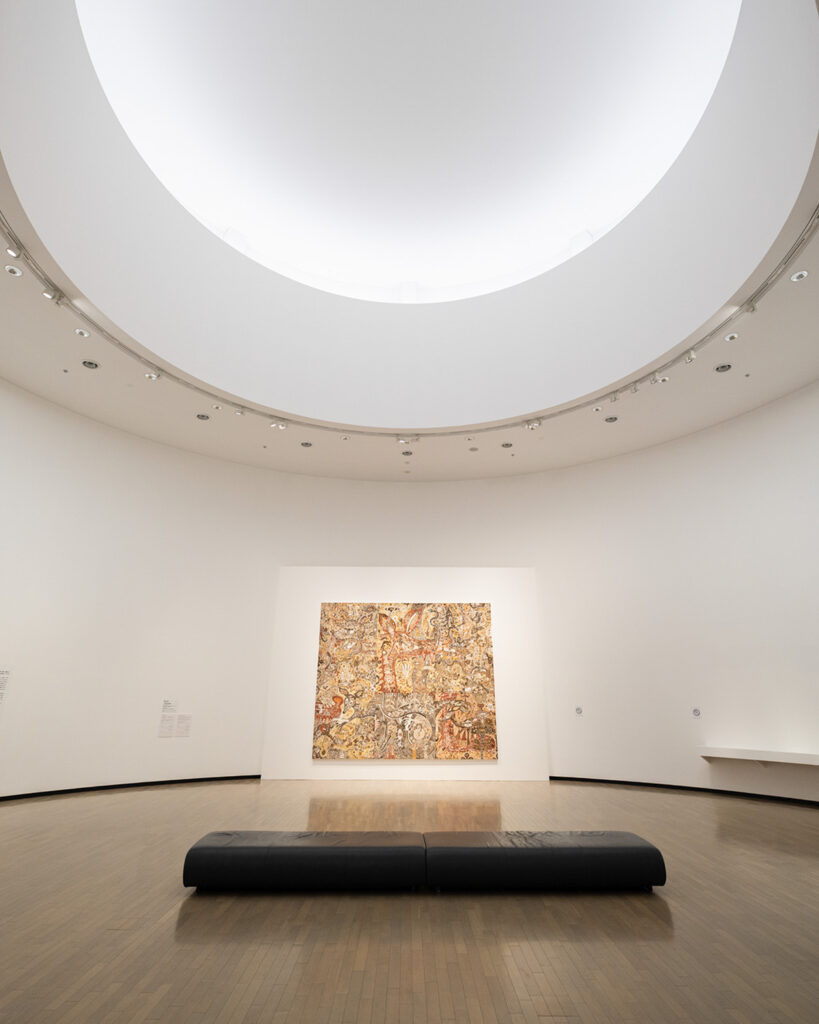
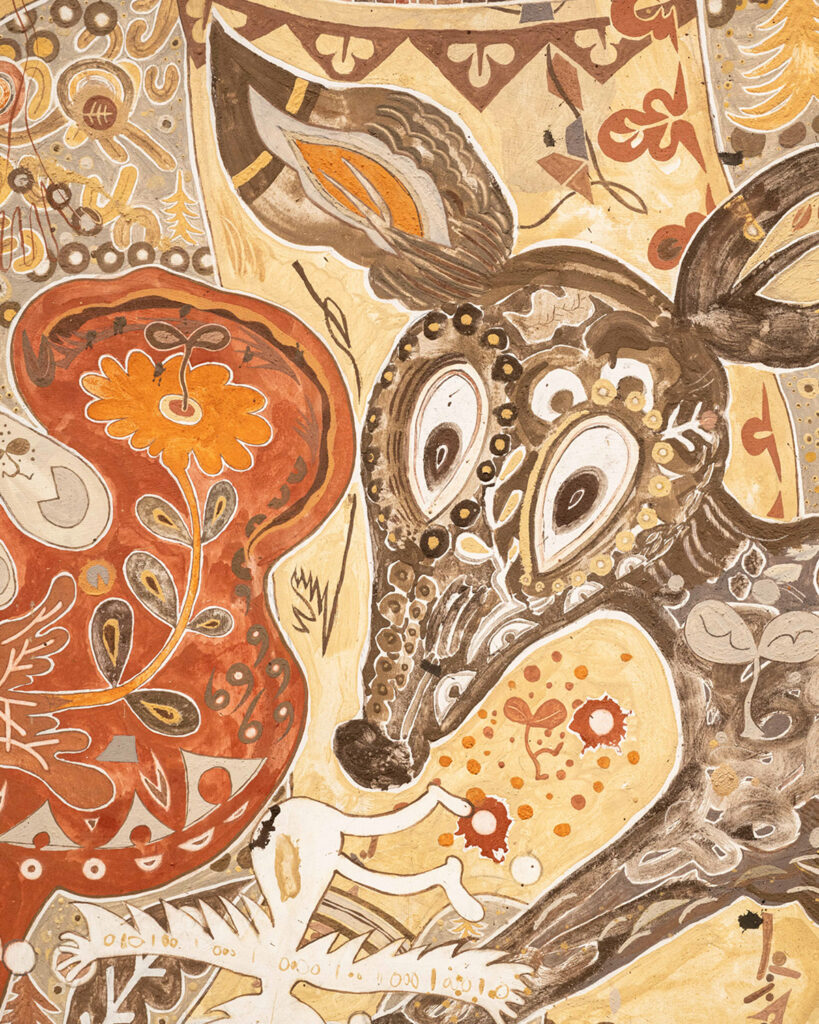
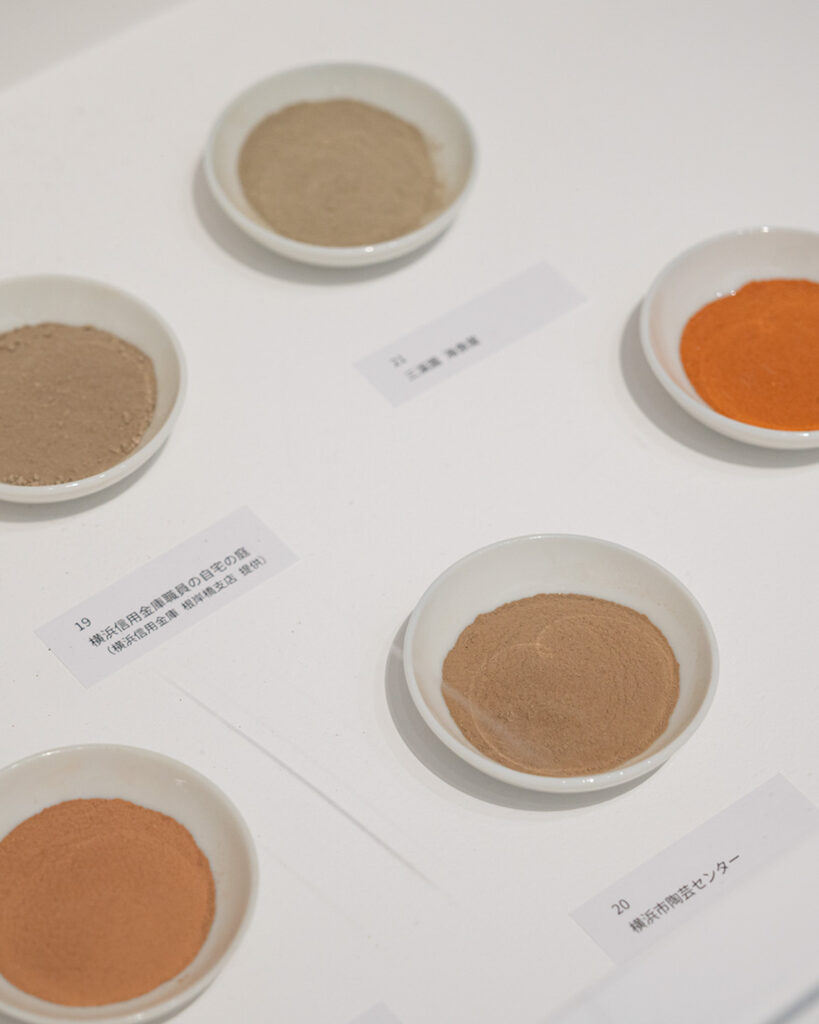
A special highlight is ‘To the Forest of All Living Things’ (Acquired in 2023 via a donation in commemoration of the 100th anniversary of the founding of Yokohama Shinkin Bank) by ASAI Yusuke, a Yokohama-based artist who created the work using soil from the city. The painting, made up of nine panels, can be rearranged into seven different configurations for viewing. It is part of the Yokohama Museum of Art’s collection.
An Outfit Inspired by Yokohama Blue
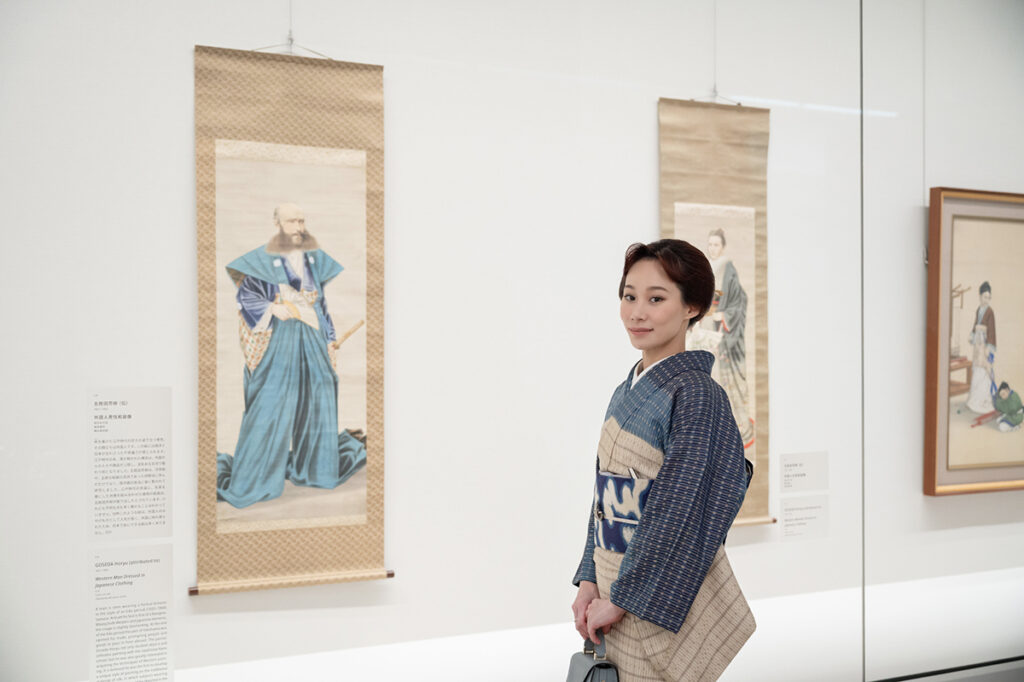
‘Western Man Dressed in Japanese Clothing’ attributed to Goseida Hōryū (Creation date unknown, Yokohama Museum of Art Collection).
While much remains unknown about the artist’s work, these types of paintings were popular as souvenirs for foreign visitors when the port of Yokohama opened for trade.
On this day, Yulia wore a fresh, blue kimono and obi inspired by the vibrant harbor town where the sea meets the sky. The kimono featured a pattern called ‘Noshime,’ created by the textile artist Takafumi Hongo. Noshime refers to a type of woven silk with stripes and checks, traditionally worn by samurai above their formal attire, such as a ceremonial kosode. As Yulia admired ‘Western Man Dressed in Japanese Clothing’ (attributed to Goseida Hōryū) in the second exhibition room, she seemed to resonate with the striking attire pictured in the artwork.
To complete her look, she accessorized with an obi clasp shaped like a sailing ship, a nod to the port town’s maritime heritage. “As this exhibition takes us through the rich history of Yokohama, I chose a ship motif clasp with delicate, light-reflecting metalwork to symbolize how even the past shines through,” Yulia explained. Her hair was adorned with a kogai (hairpin) carved from a seashell, weaving multiple layers of the sea’s story into her ensemble.
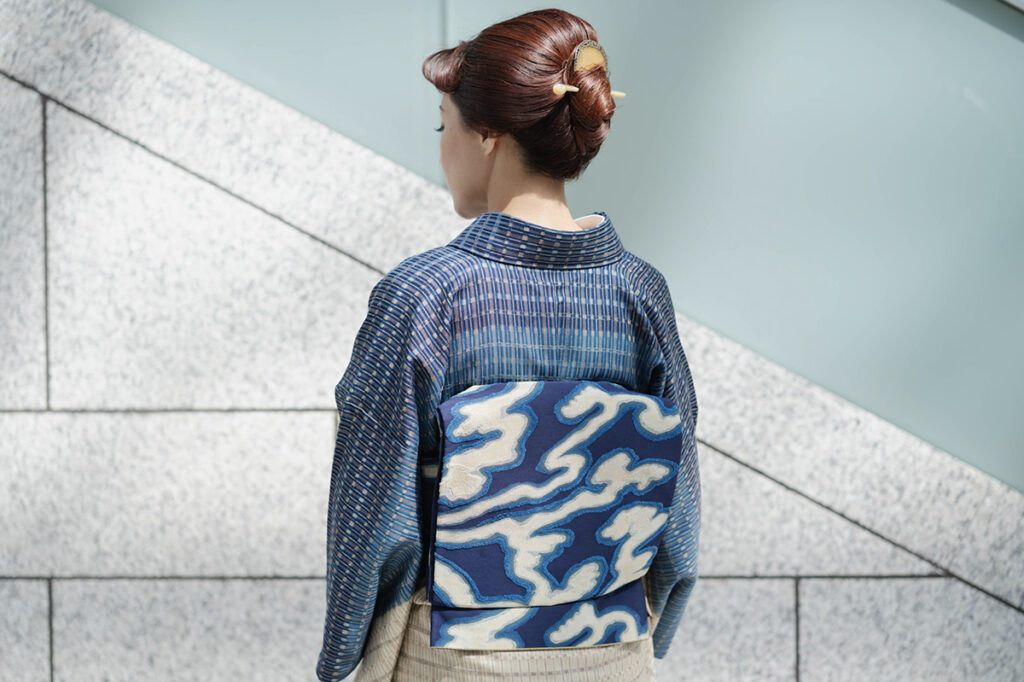
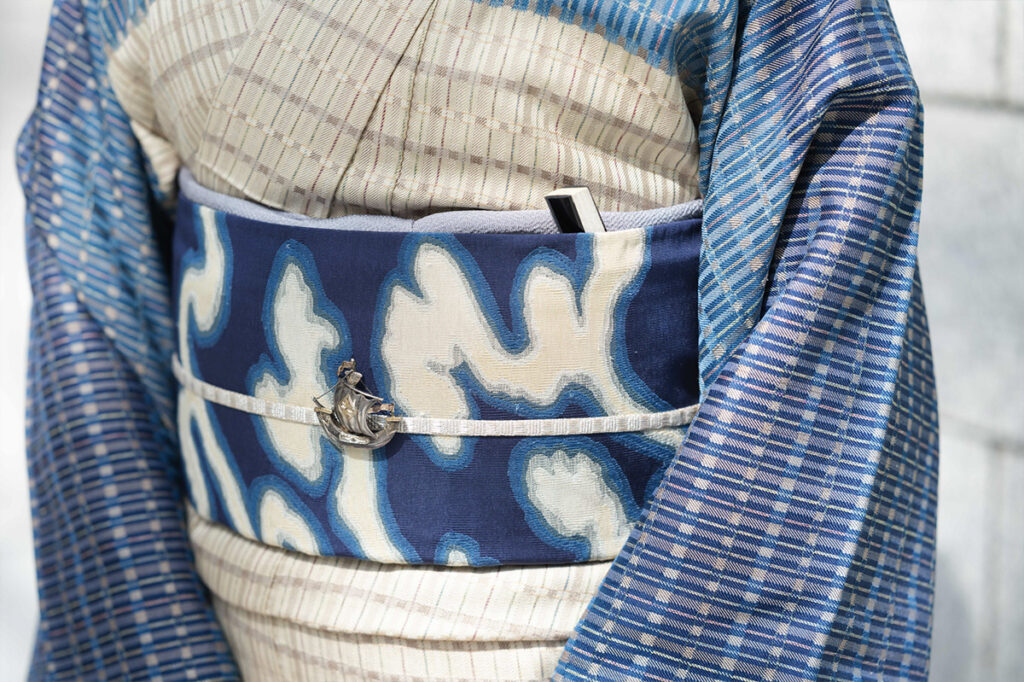
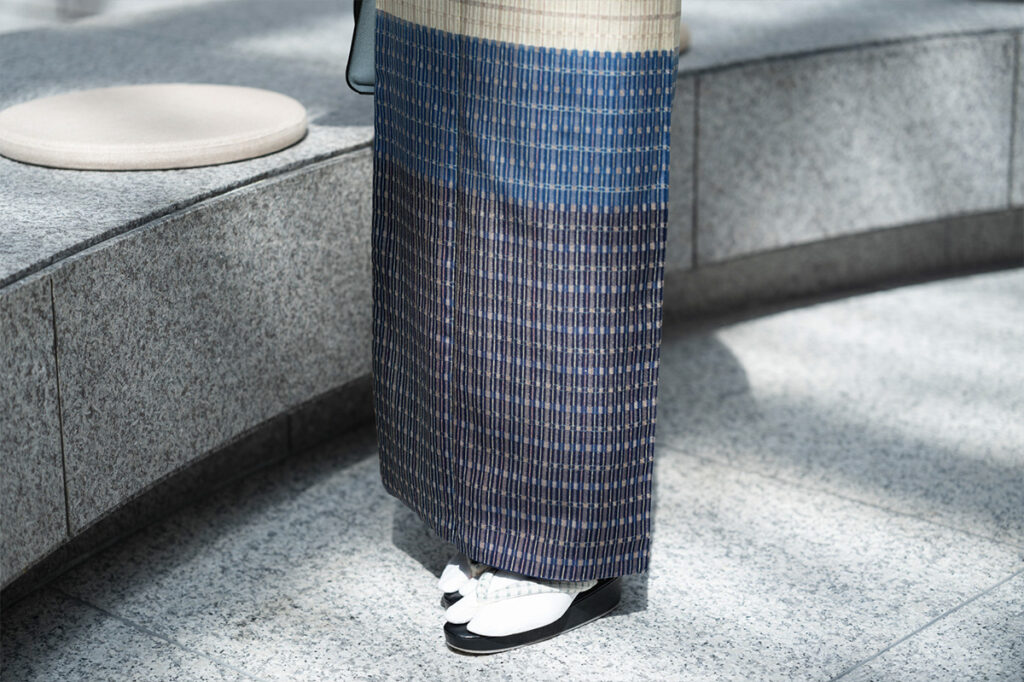
The abstract pattern of the obi evokes the wide-open sea, adding a modern edge to the look. Even the zōri sandals feature a subtle touch of blue on the straps, tying the outfit together.
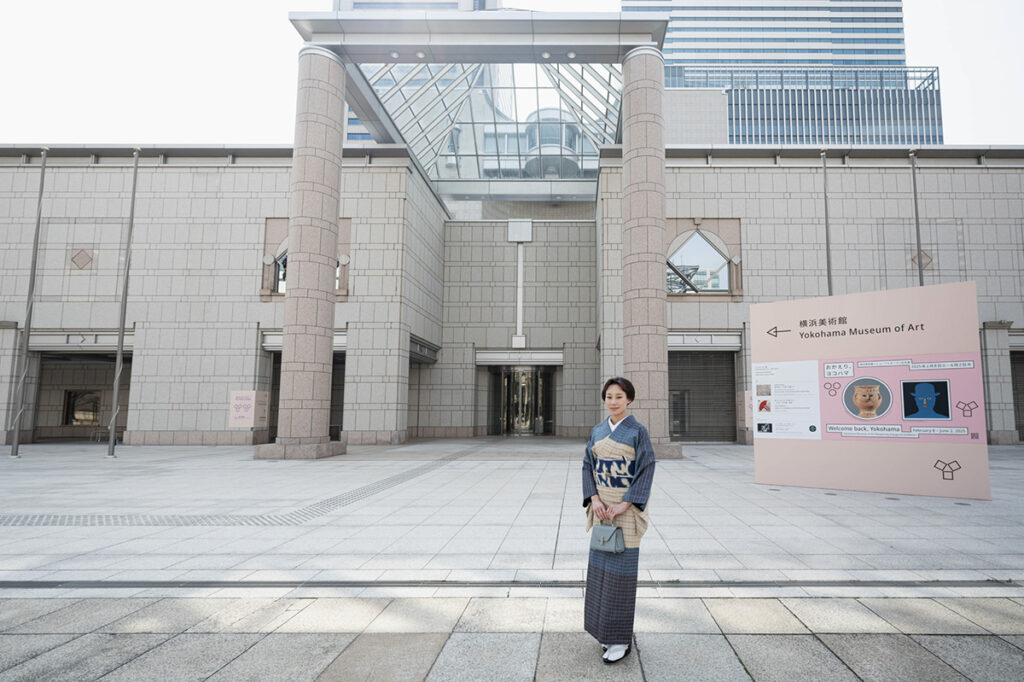
With its long, symmetrical façade, the building is dotted with distinctive design details, including “false windows” on the exterior walls. Circular and square motifs appear throughout the architecture, and have even become key visual elements of the current exhibition.
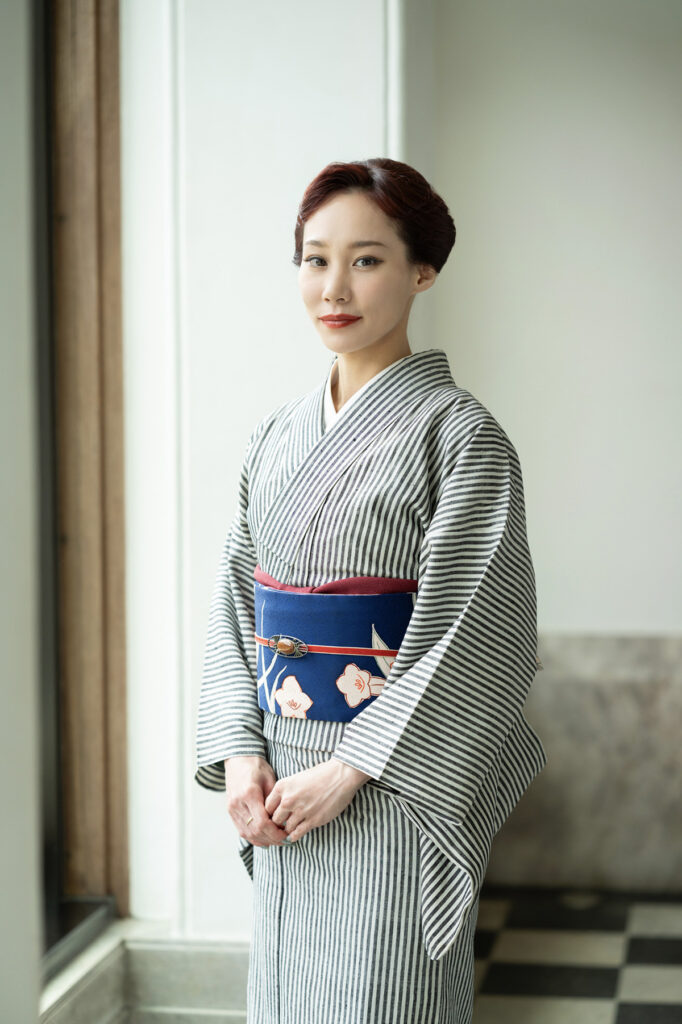
Mademoiselle Yulia
She began her career as a DJ and singer in her teens. Based in Tokyo, Mademoiselle Yulia is actively engaged globally, organizing kimono styling sessions, kimono workshops, and writing columns. In 2023, she co-founded the brand KOTOWA with friends to add stylish flair to everyday wear by incorporating kimono. She also runs a YouTube channel ‘Yulia’s Room’ where she uploads new content every week.
instagram: @MADEMOISELLE_YULIA
◾️The location featured:
Yokohama Museum of Art
Address: 3-4-1 Minatomirai, Nishi-ku, Yokohama, Kanagawa
Phone: 045-221-0300
Website: https://yokohama.art.museum/eng/

